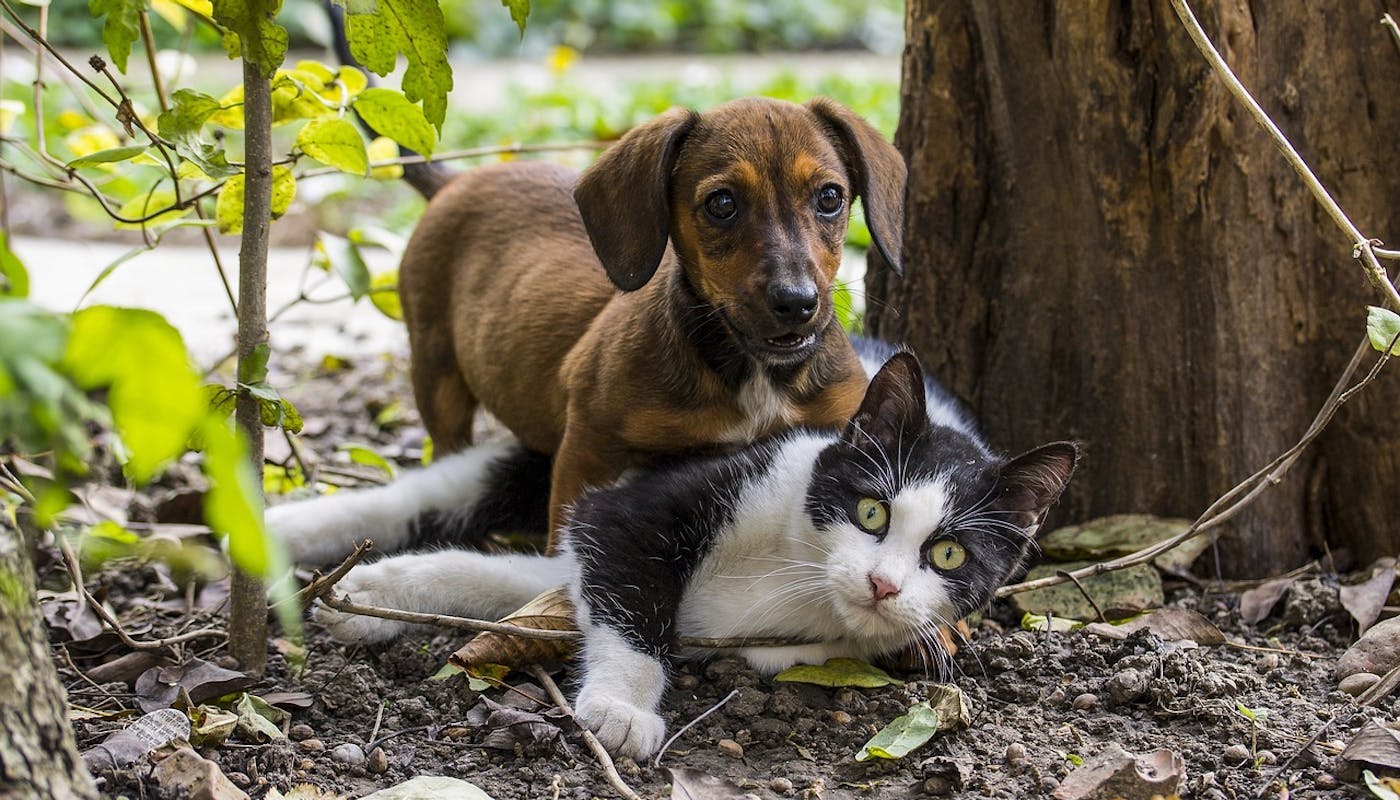Is My Dog Allergic To My Cat?
While the ‘cat person or dog person’ debate rages on, there are plenty of households that refuse to choose. And while it’s possible for cats and dogs to live together harmoniously/learn/dog-training/how-to-introduce-a-cat-and-a-dog – despite what the myths might say – there are some issues that might get in the way. For example, did you know that dogs can be allergic to cats? It’s sad but true. In this article, we’ll look at the signs that could suggest your dog is allergic to your cat, and what you can do about it.
Understanding Pet Allergies
Similar to human allergies, dog allergies stem from an immune system overreaction to certain substances/learn/dog-lifestyle/can-dogs-suddenly-develop-allergies. Whether it's pollen, dust, or specific proteins in their food, our furry friends can find themselves suffering in similar ways that we might.
Distinguishing between food and environmental allergies is the first step to helping your dog overcome the symptoms. Food allergies/learn/dog-food/how-do-i-tell-if-my-dog-is-allergic-to-their-food manifest through digestive issues, while environmental allergies often present as skin problems or respiratory issues.
Allergies develop in dogs and cats through exposure, sensitization, and an immune response. Over time, repeated exposure can heighten sensitivity, leading to more pronounced allergic reactions. So if your dog is allergic to your cat, the chances are that the allergy will worsen rather than improve the longer they live in close proximity.
Common Allergens in Cats
For those sharing their homes with both dogs and cats, understanding common cat allergens is key to ensuring a comfortable living environment for everyone. Cat allergens mainly come from proteins in cat saliva, urine, and dander – tiny particles that can float in the air and settle around the house. These allergens can affect dogs, sparking various allergic reactions.
When dogs encounter cat allergens, especially in shared spaces, it can lead to respiratory issues, skin troubles, and changes in behavior. To create a more pet-friendly setting, it's important for pet owners to identify and address the sources of cat allergens in the home.
Signs of Allergies in Dogs
Identifying the signs that your dog is suffering from an allergic reaction/learn/dog-health/tell-tale-signs-that-your-dog-has-allergies is essential for providing timely relief so that they can live their happiest, healthiest life… even in the same home as a cat.
Respiratory symptoms
While respiratory symptoms can be signs of a dog's allergy to a cat, it's important to note that allergies in dogs can manifest in various ways/learn/dog-health/symptoms-and-treatments-for-pet-allergies. Respiratory symptoms such as coughing, sneezing, and nasal discharge may occur if a dog is allergic to cat dander, but other symptoms may also be present.
Physical symptoms
Skin-related issues are often more common in pet allergies. Dogs may experience itching, redness, and skin problems due to exposure to cat allergens. These symptoms could also result from exposure to substances or even foods that your dog is allergic to/learn/dog-food/whats-the-difference-between-food-allergies-and-food.
Behavioral changes
Allergies can affect a dog's behavior. Watch for shifts in energy levels, unusual irritability, or unexplained changes in appetite. These nuances can serve as subtle distress signals, and should prompt owners to take action, whether they are the result of an allergy or another issue.
Managing Pet Allergies
If you think your dog is suffering from an allergy – to a cat or something else – your first port of call should always be the vet. Your trusted veterinarian will be able to diagnose allergies through blood tests and skin exams, and other tools that can pinpointing the specific allergens affecting your dog. This is also an important step for ruling out other causes of their symptoms so that they can be prescribed the most effective course of treatment/learn/dog-health/can-you-give-claritin-to-dogs-with-allergies.
Once your dog’s cat allergy has been confirmed, your vet will help you come up with an effective management plan. Don’t worry: in most cases, this won’t come down to choosing which of your pets stays and which goes.
Customized dietary plans, specialized grooming practices to minimize exposure to cat allergens, and, when needed, prescribed medications are key elements of a holistic allergy management plan. You’ll also need to take your dog for regular veterinary check-ups to track their progress and refine treatment strategies as their circumstances evolve.
Helping Pets Live Happily Together
Quickly identifying symptoms, diagnosing allergies, and implementing a closely-monitored treatment plan is the best way to ensure that your dog can live a happy and healthy life, even in the same home as a cat.
Minimizing allergens in the home can be achieved through regular cleaning, using air purifiers, and providing designated cat-free zones where your dog won’t be affected. Introducing preventative measures for both dogs and cats involves regular grooming for your feline friend and ensuring that your dog has a well-balanced, hypoallergenic diet.
Seeking professional advice is another key step towards a healthy multi-pet environment. Vets can offer tailored guidance, prescribe allergy-friendly medications, and recommend suitable products to help foster a harmonious coexistence between your dog and cat. With a proactive response to your dog’s allergy, you can create a blissful environment where cats and dogs can live happily as housemates.
